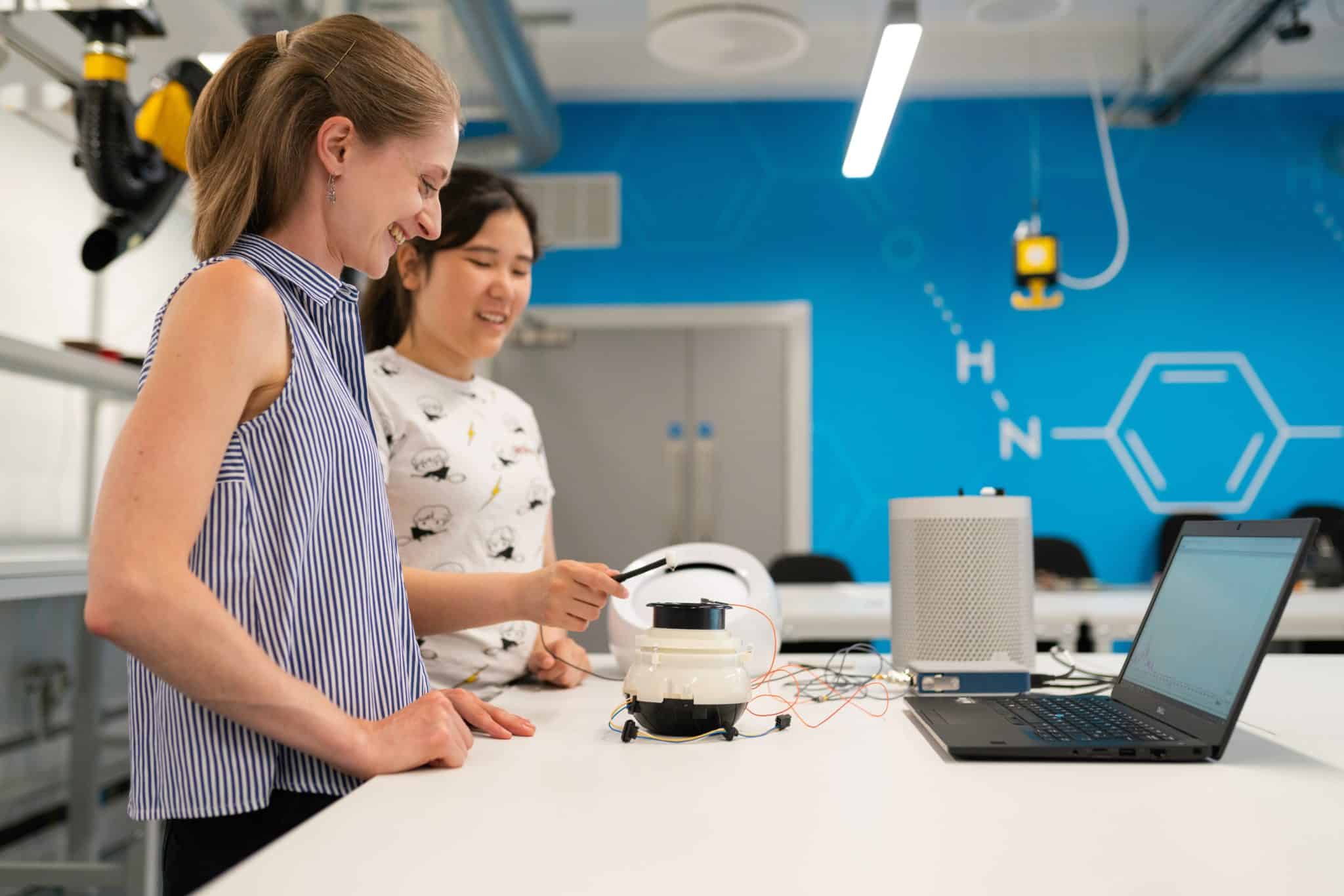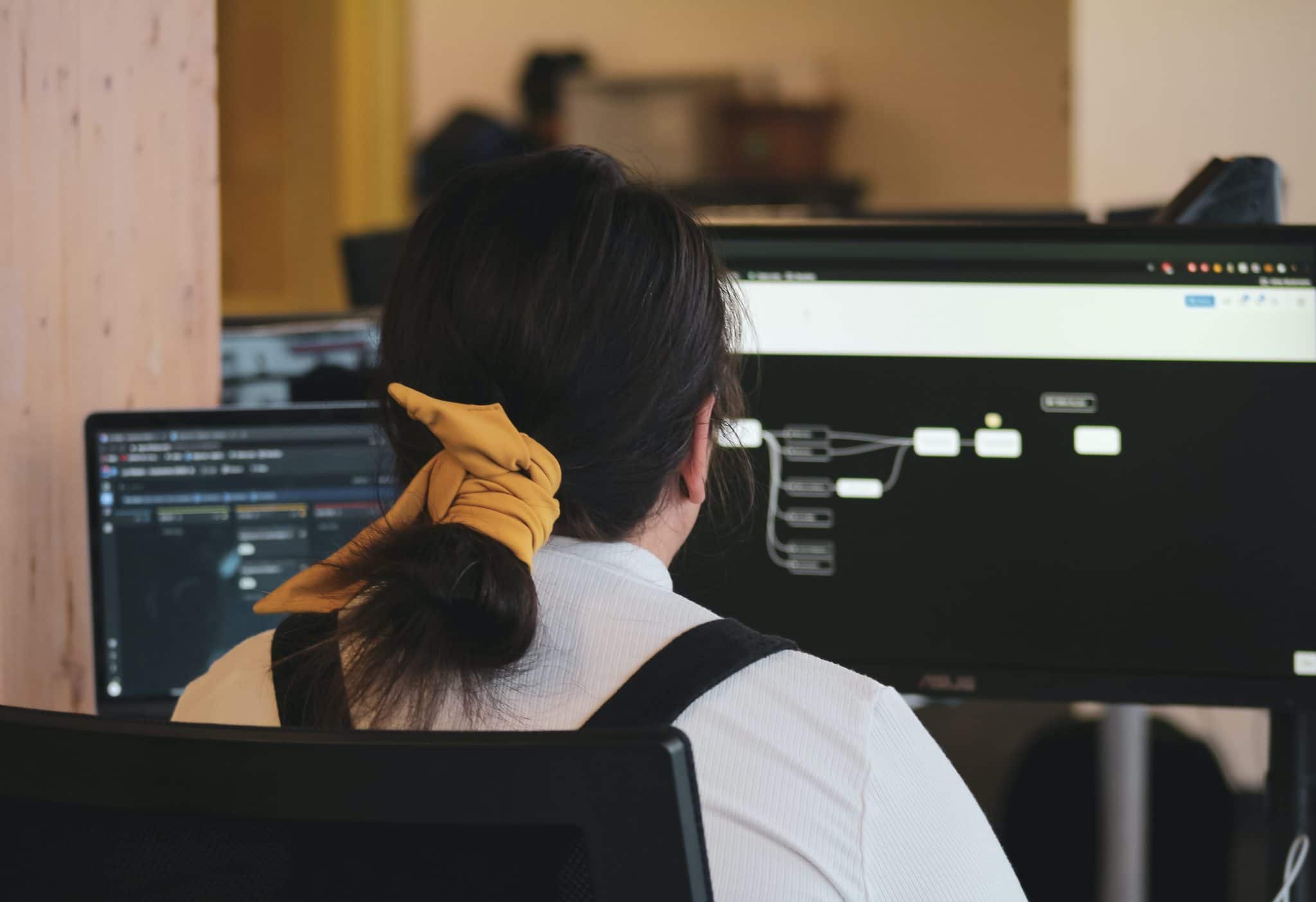Extraordinary Women in Computer Science Who Shook the World
Updated: June 19, 2024
Published: December 11, 2021

The field of computer science has historically been male-dominated. According to data from the National Science Board, women make up half the college-education population, but only 28% of the science and engineering workforce in the United States. In the UK, the number is even more dire — women make up half the employees in the workforce, but only hold 14.4% of STEM positions.
More so, the number of women in computer science holding professional computing jobs in 2020 was just 25% globally. Despite efforts by the global community to inspire and engage women and girls in science (like the International Day of Women and Girls in Science, which takes place on February 11), women and girls continue to be a minority in the science world.
Even with the low rates, there have been women in computer science that have made dramatic impacts on the world that have had an everlasting effect on societies. Before we touch on some notable women who were pioneers in the field throughout history, let’s take a look at why the numbers are so skewed. We will also review why increasing the number of women in science is so important for the global community.

This is what the Research Says:
In elementary, middle, and high school, women and men are typically present in equal percentages in STEM classes, but that rate begins to drop off for women as they progress in their education. This means that there are fewer women than men in undergraduate STEM programs, and then even fewer in graduate programs, and then even fewer in the workforce, and so on.
According to research from the American Association of University Women (AAUW), the main reason why this is the case can be attributed to the effects of learning environments and societal beliefs when it comes to females in science and math.
The report shares that by simply fostering a growth mindset in young girls in math and science, they will be more likely to say that they wish for a career in the fields. So, it’s less about ability and more about how women and men are being culturally conditioned to think about these subjects and career positions.
Cultural factors have been found to spur limiting beliefs and negatively impact girls in these fields. Research finds that when girls assess their own abilities in math and science, they usually think they are less capable than they are. In fact, boys tend to overestimate their abilities, whereas girls underestimate them (even though girls, on average, perform better).
There’s an implicit bias that science and math are “male fields” and humanities and arts are more for females. This bias and stereotyping ends up impacting the actual number of women in STEM fields despite their ability.
Here is Why Women Need to Be in Science
There are many reasons why women should be more involved in science.
Women make up half the workforce and earn more college and graduate degrees than men; however, there’s still a gender gap in science. And the gender gap in science is more than in other professions, specifically in high-end, math-intensive fields like computer science and engineering.
As women continue to earn degrees at higher rates than men, they will be needed in the workforce. This highly skilled sector requires educated professionals. So, by starting with more women in science in undergraduate and graduate programs, they will be prepared to enter the field.
Notable Women in Computer Science
Here are a few women who dared to imagine what could be, and created it for all of us.
1. Ada Lovelace, the First Computer Scientist
As a woman in the 1840s, Ada Lovelace wrote “the world’s first machine algorithm for an early computing machine that existed only on paper.”
According to Computer History, Lovelace has been referred to as the ‘prophet of the computer age,’ because she was “the first to explicitly articulate” the idea that machines can be used for more than mathematics.
2. Grace Hopper, the First Lady of Software
Grace Hopper was a naval officer and computer pioneer. She helped create the first all-electronic digital computer, known as UNIVAC (Universal Automatic Computer). UNIVAC played a huge role in the Apollo missions.
After 1949, she joined Eckert-Mauchly Computer Corp., which today exists as Honeywell, Sperry, and Unisys.
Along with her contribution to developing UNIVAC, Hopper helped create the first computer compiler, which is used to translate source code from one language to another.
3. The 6 Women of ENIAC, Programmers of the First Digital Computer
The invention of ENIAC, the first digital computer, was so important, it even got its own official ENIAC Day (February 15). The U.S. Army in Philadelphia put together the program in secret during World War II.
It was highly innovative – “the first all-electronic, programmer computer,” reports the ENIAC Programmers Project. Yet, the press announcement that celebrated it in 1946 forgot one little detail – the “six brilliant young women [who created it and]… learned to program without programming languages or tools (for none existed) – only diagrams,” according to The ENIAC Project.
Remember the names of these trailblazing women, as history finally acknowledges them: Betty Jennings, Fran Bilas, Betty Snider, Marlyn Wescoff, Kay McNulty, and Ruth Lichterman.

4. Katherine Johnson, NASA Mathematician
Not only was Katherine Johnson handpicked as one of three black students (along with two other Black men) that integrated West Virginia’s graduate school, but she also made unparalleled contributions as a NASA mathematician. In 1953, Katherine began to work at the National Advisory Committee for Aeronautics’ (NACA) Langley laboratory, where she soon moved from a temporary to permanent position as part of the Maneuver Loads Branch of the Flight Research Division. In 1957, the Soviet Union launched its satellite Sputnik, making history. NACA transformed into NASA later that year, and Johnson performed trajectory analysis on America’s first human spaceflight. Then, in 1962, she was called upon to run numbers by hand as opposed to the computer doing so (as the crew was concerned about running into technical issues), to ensure that John Glenn was ready for Glenn’s Friendship 7 Mission.
5. Margaret Hamilton, Coining “Software Engineering”
Ever wonder where the term “software engineering” came from? We have Margaret Hamilton to thank. Hamilton was an eminent mathematician and computer science pioneer. It’s said that she coined the term software engineering as she worked on developing the navigation systems for NASA’s Apollo mission. She was working as the head of the Software Engineering Division at the MIT Instrumentation Laboratory. Her work was crucial in being able to land a man on the moon. At the tender age of 32 years old, Hamilton was part of Mission Control at MIT, and shares, “I was not concentrating on the mission, per se. I was concentrating on the software.”
Earn Your Computer Science Degree Tuition-Free!
Regardless of your gender, you may be interested in earning a degree in Computer Science. Although higher education costs continue to rise, there are affordable options, such as enrolling in a tuition-free university like the University of the People. All coursework takes place online, so students worldwide benefit from a top-notch education from wherever they are located.
Take a look at the Computer Science degree program, which includes a bachelor’s and associate’s degree option, to determine which one may be right for you. If you’d rather skip the degree and earn a certificate, you have that option, too.
The Bottom Line
Women make up a large portion of student bodies when it comes to higher education, as well as employees in the workforce. And yet, the number of women in computer science is disproportionate due to factors such as implicit bias and cultural stereotypes.
As witnessed by the abbreviated list of female pioneers who changed the world with their contributions, it’s very clear that women and girls have a place in STEM fields.
